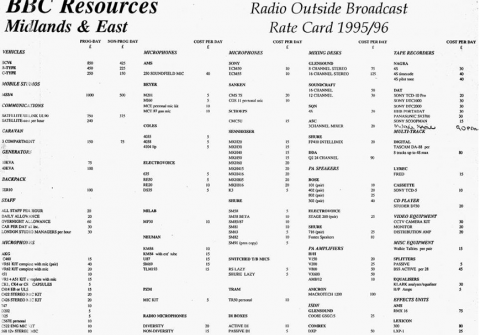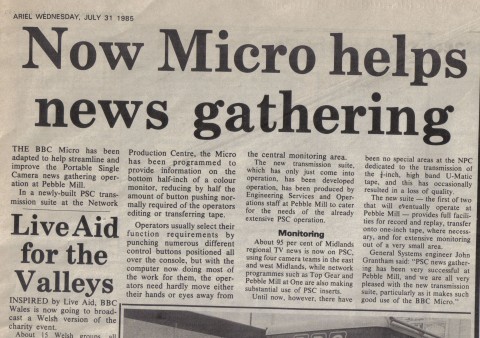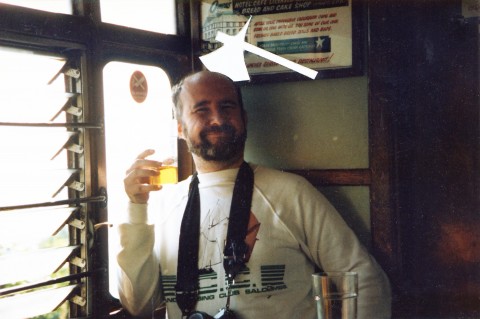Copyright resides with the original holder, no reproduction without permission.
This Radio Outside Broadcast Rate Card from 1995/6 shows the charges of various radio resources to be charged to programmes. This dates from the John Birt era of Producer Choice, and the sell off of BBC Resources.
Thanks to Peter Poole for sharing the document.
The following comments were left on the Pebble Mill Facebook group:
Peter Poole: ‘Producer choice generated a lot of paperwork. At the end of the studio session all tapes and batteries etc. used were noted. This was charged to the production. Then the office staff spent time invoicing it. Other effects were that radio studio 1 became too expensive for radio use! Crew sizes were reduced to the minimum. If you needed extra help the production had to pay. They would be charged a minimum 4 hours crew cost. Paying £100 for 30 minutes work was not popular. In the end the floor manager often put the mics on the guests. At a time when Pebble Mill was trying to save money John Birt found many ways to waste it. At great expense all staff were instructed to travel to London for a PR event. This was run by an independent company. This event was about “The New BBC”. I never went to it, but the general opinion was a total waste of time. I did go on a customer care course. This gave me vital information about how to answer the phone. Another course was about marketing. More vital information for resources staff.’
Gordon Astley: ‘I remember it was cheaper to buy albums than hire them from the BBC library. The albums then just went….well..er……??’


